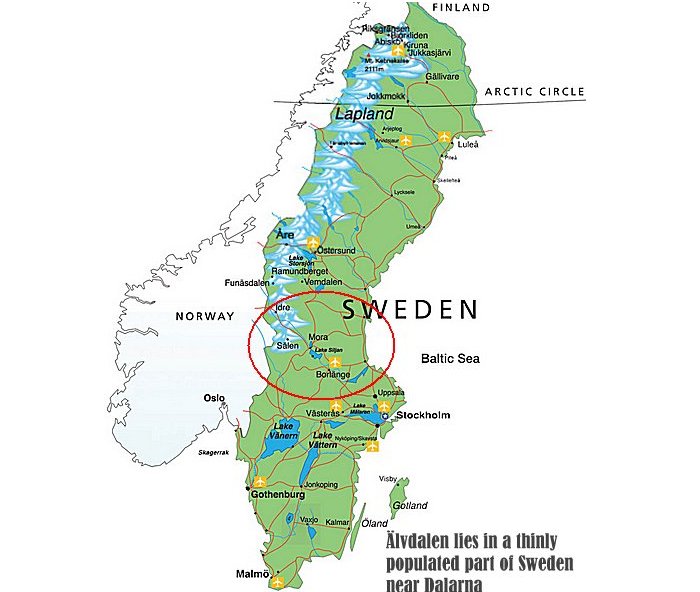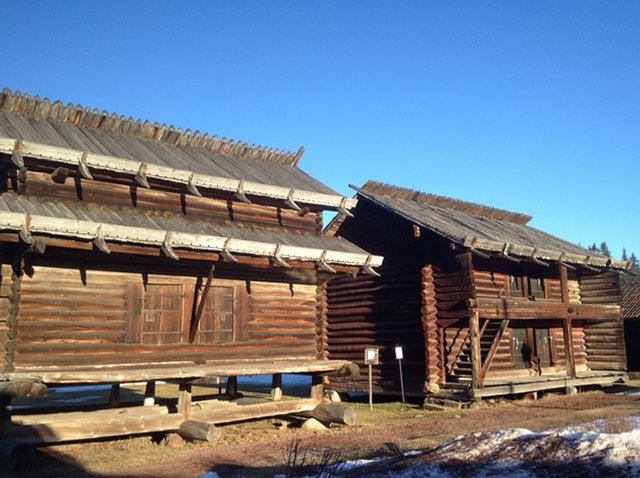Preserve Elfdalian: Sweden’s Secret Forest Language From The Viking Era
A. Sutherland - AncientPages.com - Elfdalian (in Swedish: Älvdalska) is a very ancient relative of Swedish (maybe even more 'Swedish' than it is spoken today).
Some call it a dialect, but most linguists agree it's more complicated than that. The language has been spoken in northwestern Dalarna since the Viking era, almost as ancient Swedish as anything else.
In this remote part of Sweden, people used runes until just a hundred years ago. However, most people associate runes with the Viking age. Still, in Älvdalen in western Sweden, the local population continued to use runes for centuries after the rest of Scandinavia had abandoned the ancient written language.
Hidden deep in the Swedish forests, the runes were allowed to live on until the early 20th century, just as the inhabitants retained their exceptional language Elfdalian, considered a veritable treasure chest for Scandinavian linguists.
"Älvdalen really is something very special. Firstly, because they speak a unique old Norse tongue and also because they used runes until a hundred years ago. It's absolutely fascinating," says Michael Lerche Nielsen, an assistant professor at the Department of Nordic Research at the University of Copenhagen.
The runic script was the dominant written language in Denmark and the rest of Scandinavia until the advent of Christianity in the ninth and tenth centuries introduced the Latin alphabet.
By the 15th century, the Latin alphabet had almost wiped out the use of runes – but not in Älvdalen.
Here, the Swedish linguist Henrik Rosenkvist recently saw a letter dated 1906 written partly in runes.
"The runes we see in Älvdalen are probably the most recent use of the script we know of. Runes otherwise died out in the Middle Ages, so their use in recent times is exceptional," says Rosenkvist who speaks and studies the unique language spoken in Älvdalen.
The runes of Älvdalen ('dalrunerne') are reminiscent of those used on runes stones in Denmark but there are a number of differences. Dalrunerne developed over time, influenced partially by the Latin alphabet. Here are the runes as they looked in the period leading up to the 20th century. (Illustration: Tasnu Arakun/Wikimedia Commons)
According to Nielsen, the runes in Älvdalen were most commonly found on houses and inscribed in furniture.
"The use of runes in Scandinavia gradually ceased during the 15th century. There are the odd areas of Gotland in Sweden and in Iceland where the rune tradition survived until the 17th century, but in Älvdalen, their use was widespread until the early 20th century," he says.
Bilingual road signs in Älvdalen parish, Sweden, in Swedish and Övdalian. Image credit: Lundgren8 - CC BY-SA 4.0 DEED
People in Älvdalen kept on using runes after the ancient script had been abandoned by the rest of the nation.
In addition, they were also engraved into' message blades' which were sticks of wood circulated among the farms in the area.
The landscape surrounding Älvdalen effectively cuts the community off from the rest of Sweden through mountains, forests, and lakes.
It was precisely the area's isolation from the rest of the country that lies behind the survival of the runes and the unique language -- while the rest of the country was flooded by the Latin alphabet, Germanic words, and modern Rikssvensk.
Rune inscription from 1635 - the Swedish province Dalarna. Photo credit: wikipedia
"Älvdalen lies extremely deep within the Swedish forests and mountains. You can get there by boat up the river, Dalälven -- a journey of more than 100 kilometers -- and getting there and back used to be quite an expedition.
So people in the area weren't particularly mobile and were able to preserve this very special culture, considered in Sweden to be extremely traditional and old fashioned," says Nielsen.
People in Älvdalen are a little conservative -- in a good way. They kept themselves very much to themselves," says Rosenkvist.
Image credit : Dalmålsakademin
"Another important reason is that sending your children to school wasn't obligatory in Sweden. Until the mid-19th century, many children didn't attend school, and until then, people simply kept on using the runes as their written language. When they started going to school, however, they only ever used the Latin alphabet and the use of runes gradually died out," he says.
Written by – A. Sutherland - AncientPages.com Senior Staff Writer
Updated on January 30, 2024
Copyright © AncientPages.com All rights reserved. This material may not be published, broadcast, rewritten or redistributed in whole or part without the express written permission of AncientPages.com
Expand for referencesMore From Ancient Pages
-
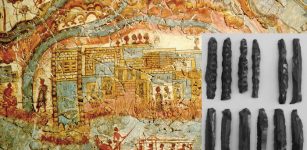 Analysis Of Ancient Tools Challenges Long-Held Ideas About What Drove Major Changes In Ancient Greek Society
Archaeology | Aug 23, 2022
Analysis Of Ancient Tools Challenges Long-Held Ideas About What Drove Major Changes In Ancient Greek Society
Archaeology | Aug 23, 2022 -
 Secrets Of 2,000-Year-Old Tomb Of Cerberus Revealed To The Public
Archaeology | Jul 29, 2024
Secrets Of 2,000-Year-Old Tomb Of Cerberus Revealed To The Public
Archaeology | Jul 29, 2024 -
 Miraculous Cauldrons Of The Ancient Celtic World
Myths & Legends | Apr 17, 2024
Miraculous Cauldrons Of The Ancient Celtic World
Myths & Legends | Apr 17, 2024 -
 Rare Ancient Roman Cauldron Discovered In Central Norway
Archaeology | Sep 16, 2019
Rare Ancient Roman Cauldron Discovered In Central Norway
Archaeology | Sep 16, 2019 -
 How Many Ice Ages Has The Earth Had, And Could Humans Live Through One?
Featured Stories | Sep 26, 2022
How Many Ice Ages Has The Earth Had, And Could Humans Live Through One?
Featured Stories | Sep 26, 2022 -
 Medieval Music Wasn’t Only Supposed To Be Beautiful To Listen To – A New Study Suggests
Archaeology | Jun 8, 2023
Medieval Music Wasn’t Only Supposed To Be Beautiful To Listen To – A New Study Suggests
Archaeology | Jun 8, 2023 -
 Stunning Ancient Roman Artifacts And Three Shipwrecks Discovered Underwater Off The Coast Off Alexandria, Egypt
Archaeology | Nov 26, 2017
Stunning Ancient Roman Artifacts And Three Shipwrecks Discovered Underwater Off The Coast Off Alexandria, Egypt
Archaeology | Nov 26, 2017 -
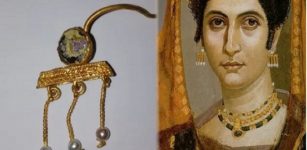 Gold Earring Found In Ruins Of Ancient Roman Colony Deultum In Bulgaria
Archaeology | Oct 11, 2020
Gold Earring Found In Ruins Of Ancient Roman Colony Deultum In Bulgaria
Archaeology | Oct 11, 2020 -
 On This Day In History: Planet Neptune Officially Discovered – On Sep 23, 1846
News | Sep 23, 2016
On This Day In History: Planet Neptune Officially Discovered – On Sep 23, 1846
News | Sep 23, 2016 -
 Ruins Of Ancient Jerusalem Shed New Light On Earth’s Magnetic Field’s Behavior
Ancient Symbols | Aug 11, 2020
Ruins Of Ancient Jerusalem Shed New Light On Earth’s Magnetic Field’s Behavior
Ancient Symbols | Aug 11, 2020 -
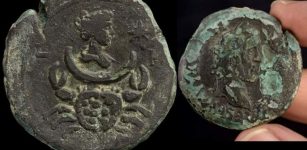 1,850-Year-Old Rare Bronze Coin, Depicting Roman Moon Goddess Luna – Unearthed
Archaeology | Aug 3, 2022
1,850-Year-Old Rare Bronze Coin, Depicting Roman Moon Goddess Luna – Unearthed
Archaeology | Aug 3, 2022 -
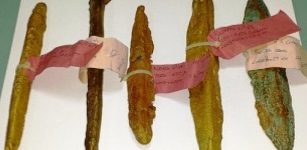 Legendary ‘Orichalcum Metal’ Related To Atlantis Found In 2,600-Year-Old Shipwreck
Archaeology | Mar 3, 2017
Legendary ‘Orichalcum Metal’ Related To Atlantis Found In 2,600-Year-Old Shipwreck
Archaeology | Mar 3, 2017 -
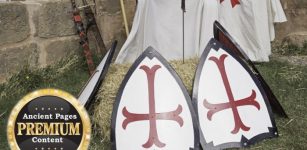 Strange Engraving Made By Knights Templar In French Village – It Doesn’t Make Sense Or Does It? – Part 2
Ancient Mysteries | Oct 9, 2019
Strange Engraving Made By Knights Templar In French Village – It Doesn’t Make Sense Or Does It? – Part 2
Ancient Mysteries | Oct 9, 2019 -
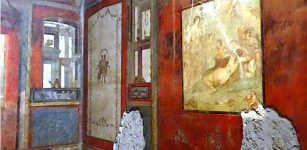 Roman Sexuality Was Far More Complex Than Simply Gay Or Straight – Pompeii’s House Of The Vettii Reveals Why
Featured Stories | Jan 24, 2023
Roman Sexuality Was Far More Complex Than Simply Gay Or Straight – Pompeii’s House Of The Vettii Reveals Why
Featured Stories | Jan 24, 2023 -
 Strange Ancient Mechanical Flying Animals – Myths Or Advanced Ancient Technology? – Part 1
Ancient Mysteries | Mar 25, 2020
Strange Ancient Mechanical Flying Animals – Myths Or Advanced Ancient Technology? – Part 1
Ancient Mysteries | Mar 25, 2020 -
 Bulgaria’s Aquae Calidae Spa Complex: More 40 Coins Dated To 4th Century CE – Found
Archaeology | Jul 24, 2020
Bulgaria’s Aquae Calidae Spa Complex: More 40 Coins Dated To 4th Century CE – Found
Archaeology | Jul 24, 2020 -
 On This Day In History: Samurai Final Battle of Shiroyama Was Fought – On Sep 24, 1877
News | Sep 24, 2016
On This Day In History: Samurai Final Battle of Shiroyama Was Fought – On Sep 24, 1877
News | Sep 24, 2016 -
 New Clues May Explain Collapse Of Ancient City Teotihuacan In Mexico
Archaeology | Sep 22, 2022
New Clues May Explain Collapse Of Ancient City Teotihuacan In Mexico
Archaeology | Sep 22, 2022 -
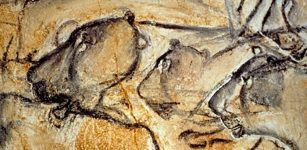 Chauvet-Pont d’Arc Cave And Surrounding Landscape – What Did The Ancient Artists See?
Archaeology | Apr 29, 2021
Chauvet-Pont d’Arc Cave And Surrounding Landscape – What Did The Ancient Artists See?
Archaeology | Apr 29, 2021 -
 Why Was Louis XIV Called The Sun King?
Ancient History Facts | Jul 11, 2019
Why Was Louis XIV Called The Sun King?
Ancient History Facts | Jul 11, 2019

